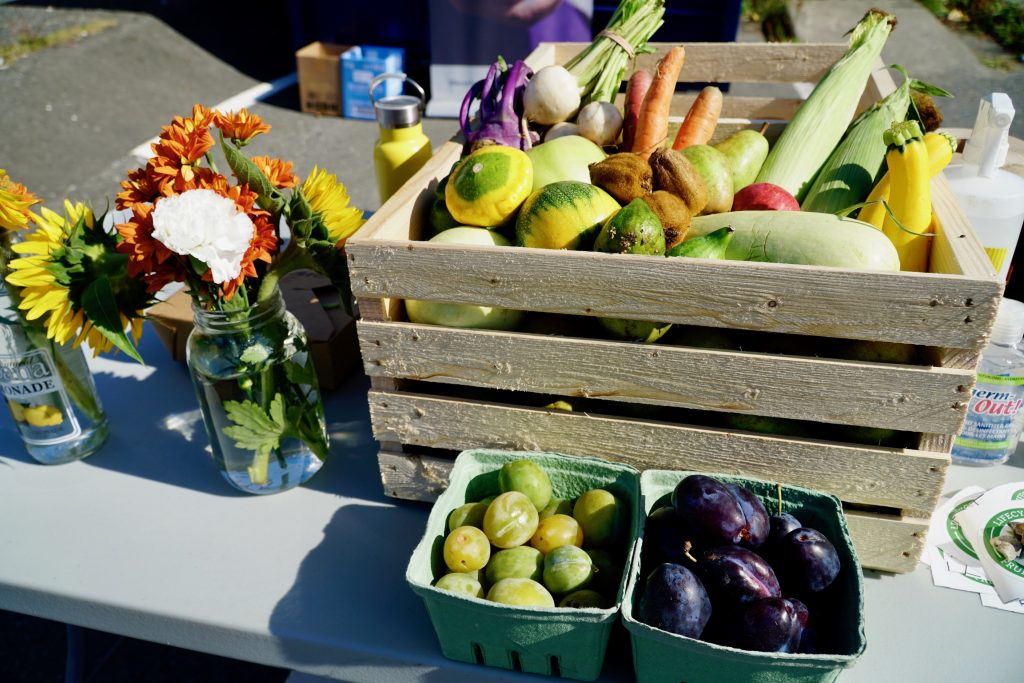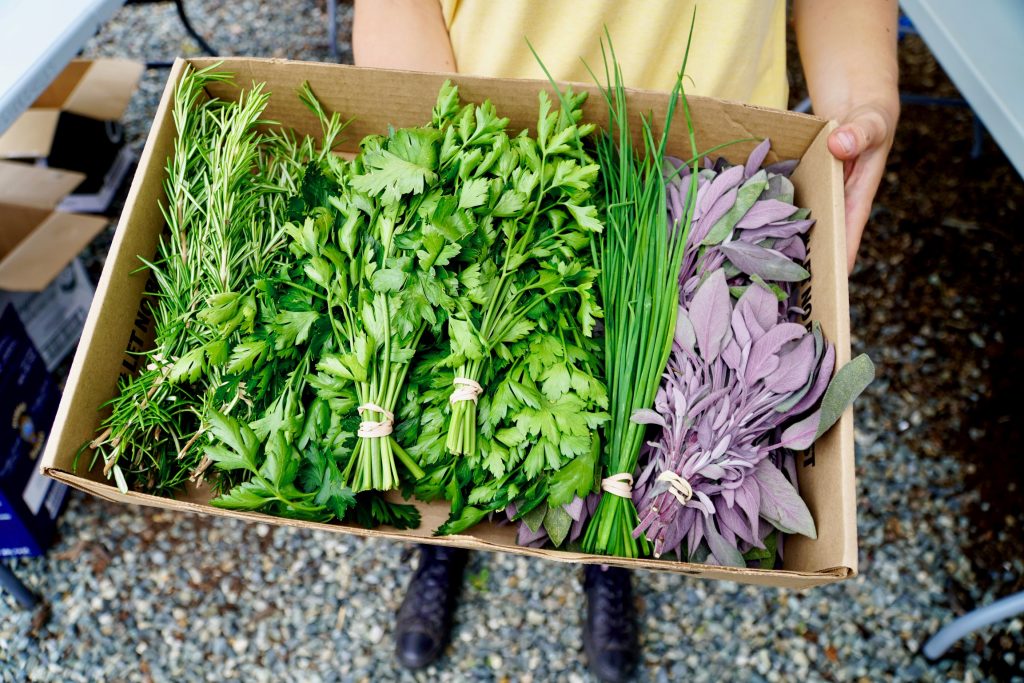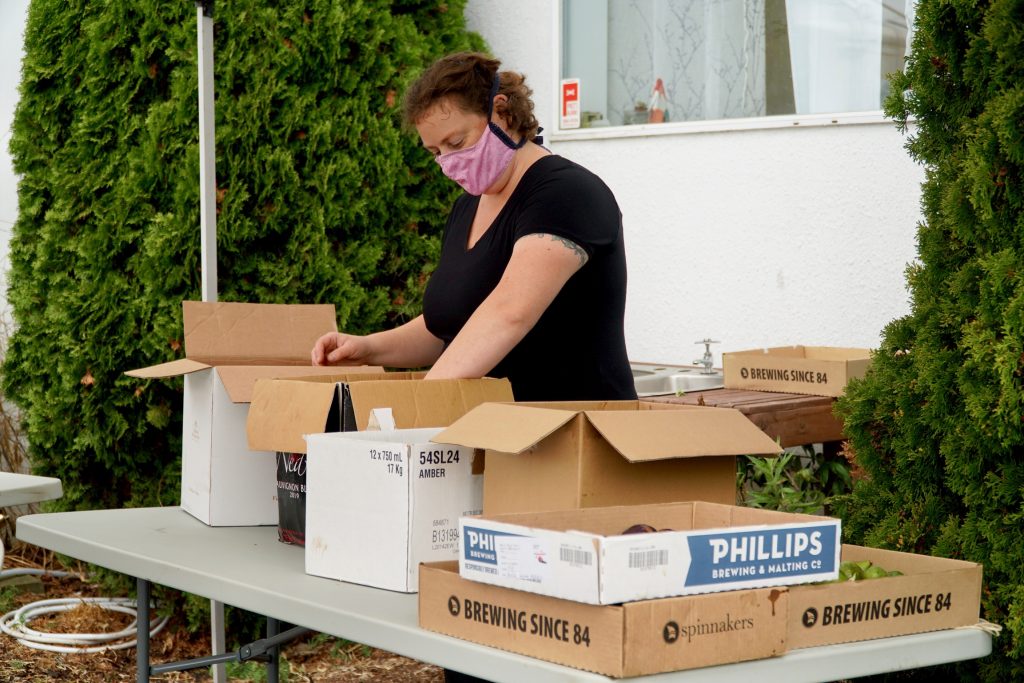
Why should you eat local?
Lessons in food sovereignty
The pandemic changed the way many of us eat. And when the way we eat changes, it’s only natural that the way we think about food changes too. With these changes comes an interesting focus on local food.
Where does our food really come from?
This global crisis caused many disruptions, some of which highlighted vulnerabilities in our nation’s food supply chain. A shift in consumption resulted in empty shelves at the grocery store as supply could not keep up with demand, and labour shortages plus the closure of food processing plants created bottlenecks when it came to getting food from farm to shelf.
This provided a unique opportunity for folks who were now spending most of their time at home to embrace food related activities such as gardening, preserving and nurturing a sourdough starter. There was even a global seed shortage this time last year because so many people were turning over garden beds as a way to spend their days during lockdown. The shift to growing food created a natural curiosity about where the food we buy and eat is coming from.
Without knowing it, a large number of the population began to embrace food sovereignty. Food sovereignty is a movement that focuses on the intersection between what we eat and who we are. It emphasizes the importance of access to healthy, culturally-appropriate, affordable food.

Why is food sovereignty important?
Food is a basic human right. The concept of food sovereignty intersects with food security to go beyond the scarcity mindset of “you get what you get” to understanding the abundance that can be created when we focus on eating local. When done right, food sovereignty can provide the blueprint for how we can provide food for all here at home.
Instead of centering the industrial production of food, food sovereignty calls for us to consider the local food system. What is in season right now? Where can I buy it? And who can I buy it from? We’ve grown so used to accessing what we want when we want it in grocery stores, that some of us might not even know what is being grown locally (and when is the best time to buy and eat it!). By eating local, you can connect with growers in your community.
Food sovereignty “…highlights the need for a democratic food system, one that involves inputs from citizens as well as producers” (from Food Secure Canada) and is necessary to the process of providing every Canadian with food security. This shift puts the focus on the people who are producing and eating the food versus the large industrial companies.
Moving food around costs money! Consumers are forced to eat that cost (literally) when we shop for food that’s been imported. And while we don’t mind paying for our food, the value gets lost when it’s shipped in. Instead of paying what the food is worth, we pay for the cost of transport (which also has an effect on our climate because of the carbon footprint of freight systems).
By taking some of the power away from large food corporations we can make sure local growers are the ones who profit and that our community is eating the high quality, fresh food.
Eating food grown near you tastes better because it hasn’t been modified to withstand transit. Sure, it’s nice to buy strawberries year-round. However, when strawberries are in season and purchased from the farmer’s market up the road, they taste better. So why don’t we eat this way all the time?
Eating local might seem daunting to someone who is used to getting food from a grocery store, who hasn’t thought much about where their food comes from, and who thinks that this way of eating is less convenient or individually unsustainable.
However, we have an example of abundant food sovereignty in action right in our own backyards. Victoria’s Urban Orchard, the network of fruit trees that spans properties in Greater Victoria, provides an ample harvest that gets picked by our volunteers and distributed via the Food Share Network each year. Thousands of pounds of fruit are harvested and enjoyed by us, our volunteers, tree owners, and other people in the community. What doesn’t get eaten gets processed into other delicious things, like quince paste or cider or other preserves. The Urban Orchard is just one example of how an abundance of food can be grown, harvested, and distributed locally.
This fresh, delicious, healthy source of food exists in town–all you need to do is look. In fact, you likely have a fruit tree in your own yard! And even if you don’t have a fruit tree or the time or space to garden, there are still many ways you can begin to eat local.

How can I eat local?
Like anything, a local diet does not need to be perfect. Small changes and gradual shifts are a good place to start.
A few ways you can begin to practice food sovereignty:
-shop at farmer’s markets
–sign up for CSA boxes
-plant your own garden (using seeds from Victoria Seed Library)
–Good Food boxes
-pick or sort fruit for Fruit Tree Project
-eat fruit and vegetables that are in season
-preserve food in season to eat out of season (freezing, canning, etc.)
But why should I eat local?
Local food isn’t just delicious. And eating local isn’t a new idea. There is an old adage about eating seasonally: you eat above ground in the summer and below ground in the winter. This is a way of eating that is tried and true and good for you (and your community).
By supporting local growers, you support the local food system and that is much better for everyone. It’s better for you, the consumer. Better for the producers. Better for the environment. And it’s a way that you can contribute to the fight for food justice for all.
The call for food sovereignty is a call for food suppliers to recognize the reciprocal relationship between the food, the land, and the people who care for it. By changing the way we eat, we change our relationship with the land. By changing our relationship with the land, we strengthen the local food system. By strengthening the local food system, we change the way we eat. It’s a positive cycle.
Within this movement, there is a focus on local food systems–a major tenet of food sovereignty is that the people have more control over where their food comes from. If we want a food-secure future, we need to prioritize food sovereignty. We want to create a food system where everyone can afford to eat, where everyone feels like they have control over what they eat, and where there are healthy, fresh, culturally-appropriate food options for all.
The first step is eating local (and trust us when we say this is a very delicious step in the right direction).
To learn more about food sovereignty and eating local, check out the resources below:
https://weseedchange.org/food-sovereignty/
https://thetyee.ca/News/2020/06/29/The-100-Mile-Diet-15-Years-Later/
https://foodsecurecanada.org/who-we-are/what-food-sovereignty
https://www.nfu.ca/campaigns/food-sovereignty/
https://www.nationalobserver.com/2020/06/09/features/we-desperately-need-be-talking-about-food-sovereignty